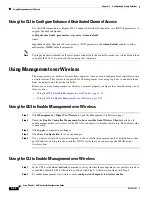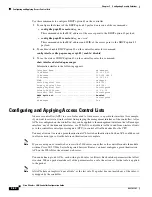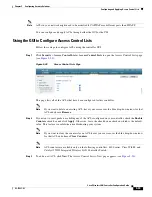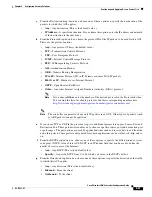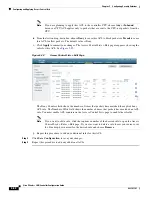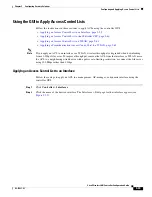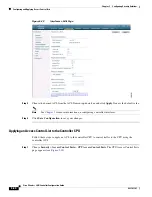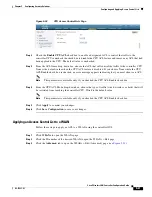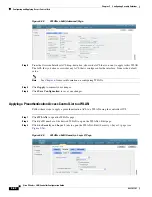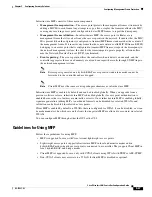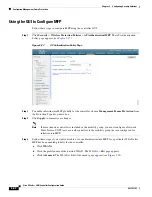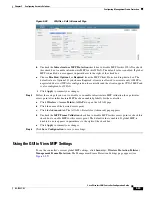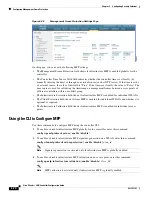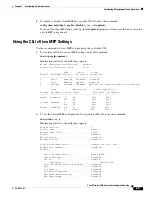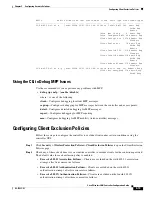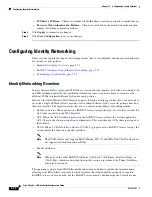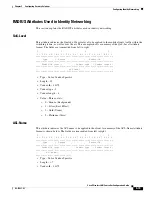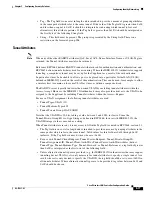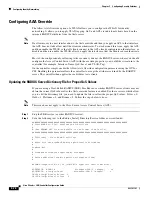
5-66
Cisco Wireless LAN Controller Configuration Guide
OL-17037-01
Chapter 5 Configuring Security Solutions
Configuring Management Frame Protection
Configuring Management Frame Protection
Management frame protection (MFP) provides security for the otherwise unprotected and unencrypted
802.11 management messages passed between access points and clients. MFP provides both
infrastructure and client support. Controller software release 4.1 or later supports both infrastructure and
client MFP while controller software release 4.0 supports only infrastructure MFP.
•
Infrastructure MFP
—Protects management frames by detecting adversaries that are invoking
denial-of-service attacks, flooding the network with associations and probes, interjecting as rogue
access points, and affecting network performance by attacking the QoS and radio measurement
frames. It also provides a quick and effective means to detect and report phishing incidents.
Specifically, infrastructure MFP protects 802.11 session management functions by adding message
integrity check information elements (MIC IEs) to the management frames emitted by access points
(and not those emitted by clients), which are then validated by other access points in the network.
Infrastructure MFP is passive. It can detect and report intrusions but has no means to stop them.
•
Client MFP
—Shields authenticated clients from spoofed frames, preventing many of the common
attacks against wireless LANs from becoming effective. Most attacks, such as deauthentication
attacks, revert to simply degrading performance by contending with valid clients.
Specifically, client MFP encrypts management frames sent between access points and CCXv5
clients so that both the access points and clients can take preventative action by dropping spoofed
class 3 management frames (that is, management frames passed between an access point and a client
that is authenticated and associated). Client MFP leverages the security mechanisms defined by
IEEE 802.11i to protect the following types of class 3 unicast management frames: disassociation,
deauthentication, and QoS (WMM) action. Client MFP protects a client-access point session from
the most common type of denial-of-service attack. It protects class 3 management frames by using
the same encryption method used for the session’s data frames. If a frame received by the access
point or client fails decryption, it is dropped, and the event is reported to the controller.
To use client MFP, clients must support CCXv5 MFP and must negotiate WPA2 using either TKIP
or AES-CCMP. EAP or PSK may be used to obtain the PMK. CCKM and controller mobility
management are used to distribute session keys between access points for Layer 2 and Layer 3 fast
roaming.
Note
To prevent attacks using broadcast frames, access points supporting CCXv5 will not emit any
broadcast class 3 management frames (such as disassociation, deauthentication, or action).
CCXv5 clients and access points must discard broadcast class 3 management frames.
Client MFP supplements infrastructure MFP rather than replaces it because infrastructure MFP
continues to detect and report invalid unicast frames sent to clients that are not client-MFP capable
as well as invalid class 1 and 2 management frames. Infrastructure MFP is applied only to
management frames that are not protected by client MFP.

